第68章 5(5)
Such, then, is the structure of the parts that minister to nutrition and which every animal must possess. But besides these organs it is quite plain that in every animal there must be some part or other which shall be analogous to what in sanguineous animals is the presiding seat of sensation. Whether an animal has or has not blood, it cannot possibly be without this. In the Cephalopoda this part consists of a fluid substance contained in a membrane, through which runs the gullet on its way to the stomach. It is attached to the body rather towards its dorsal surface, and by some is called the mytis. Just such another organ is found also in the Crustacea and there too is known by the same name. This part is at once fluid and corporeal and, as before said, is traversed by the gullet. For had the gullet been placed between the mytis and the dorsal surface of the animal, the hardness of the back would have interfered with its due dilatation in the act of deglutition. On the outer surface of the mytis runs the intestine; and in contact with this latter is placed the ink-bag, so that it may be removed as far as possible from the mouth and its obnoxious fluid be kept at a distance from the nobler and sovereign part. The position of the mytis shows that it corresponds to the heart of sanguineous animals; for it occupies the self-same place. The same is shown by the sweetness of its fluid, which has the character of concocted matter and resembles blood.
In the Testacea the presiding seat of sensation is in a corresponding position, but is less easily made out. It should, however, always be looked for in some midway position; namely, in such Testacea as are stationary, midway between the part by which food is taken in and the channel through which either the excrement or the spermatic fluid is voided, and, in those species which are capable of locomotion, invariably midway between the right and left sides.
In Insects this organ, which is the seat of sensation, lies, as was stated in the first treatise, between the head and the cavity which contains the stomach. In most of them it consists of a single part; but in others, for instance in such as have long bodies and resemble the Juli (Millipedes), it is made up of several parts, so that such insects continue to live after they have been cut in pieces.
For the aim of nature is to give to each animal only one such dominant part; and when she is unable to carry out this intention she causes the parts, though potentially many, to work together actually as one. This is much more clearly marked in some insects than in others.
The parts concerned in nutrition are not alike in all insects, but show considerable diversity. Thus some have what is called a sting in the mouth, which is a kind of compound instrument that combines in itself the character of a tongue and of lips. In others that have no such instrument in front there is a part inside the mouth that answers the same sensory purposes. Immediately after the mouth comes the intestine, which is never wanting in any insect. This runs in a straight line and without further complication to the vent; occasionally, however, it has a spiral coil. There are, moreover, some insects in which a stomach succeeds to the mouth, and is itself succeeded by a convoluted intestine, so that the larger and more voracious insects may be enabled to take in a more abundant supply of food. More curious than any are the Cicadae. For here the mouth and the tongue are united so as to form a single part, through which, as through a root, the insect sucks up the fluids on which it lives.
Insects are always small eaters, not so much because of their diminutive size as because of their cold temperament. For it is heat which requires sustenance; just as it is heat which speedily concocts it. But cold requires no sustenance. In no insects is this so conspicuous as in these Cicadae. For they find enough to live on in the moisture which is deposited from the air. So also do the Ephemera that are found about the Black sea. But while these latter only live for a single day, the Cicadae subsist on such food for several days, though still not many.
We have now done with the internal parts of animals, and must therefore return to the consideration of the external parts which have not yet been described. It will be better to change our order of exposition and begin with the animals we have just been describing, so that proceeding from these, which require less discussion, our account may have more time to spend on the perfect kinds of animals, those namely that have blood.